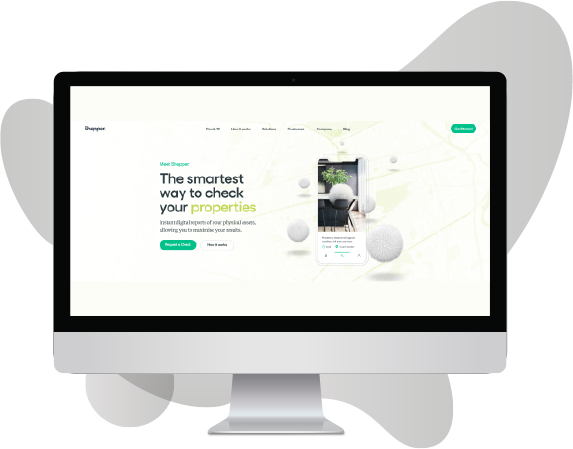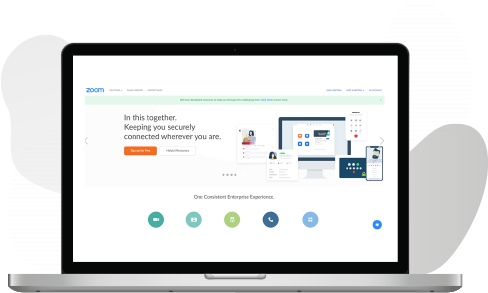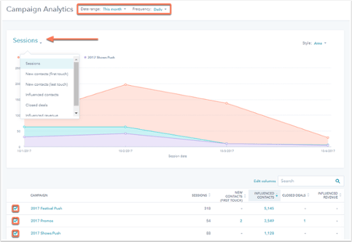How to Build a Sales-Ready B2B Website
The global pandemic forced vast numbers of companies into a "transform or die" decision on business-to-business selling. More B2B buyers than ever use search engines and websites to find solutions and do business with new suppliers. The winning companies are those who have optimized their websites to take advantage of the new normal in B2B sales. Here's how you can do the same.
According to CSO Insights, over 70% of B2B buyers conduct online research before engaging with a sales rep. Almost half choose a product or service solution before even contacting the seller. Thanks to search engines like Google and Bing, buyers can move swiftly from online research to comparing solutions and choosing suppliers.
“A sales-ready" website means delivering an online customer experience that lines up with how customers want to do their buying.”
5 Steps of a "Sales Ready" B2B Website
Done right, our “five best ideas” can transform your website into a tireless 24/7 business-to-business sales engine. Preparing your website to convert more of these visitors to leads doesn’t take a complete rebuild.
- Optimize your website for Google Search
- Combine high-impact headlines with simplified design
- Convert visitors into leads with conversion paths
- Integrate with your CRM to get marketing and sales in sync
- Install visitor analytics that keep your pipeline growing
1. Show Up in Search by Optimizing Your Website for Google
Not showing up on the first page of Google search results? Or second or third? Search engine optimization (SEO) is your top priority. SEO increases the power of your website to attract qualified leads.
When buyers first land on your site, they are in the Awareness stage of the buyer’s journey. These viewers arrived via either organic traffic (meaning they searched a word or phrase that led them to your site), or they are paid traffic. Paid traffic was directed to your site through a campaign you implemented through paid ads or a sponsored listing. The buying process and actions of companies reflect their evolving needs, problems and challenges. Connecting with these buyers through search results means optimizing your website content and performance on an ongoing basis. Both technical SEO and content SEO are critical to boosting your search engine results.
Technical SEO: Coding a Google-friendly site.
Technical SEO refers to improving your website’s structure and coding for higher search engine page rankings. This includes such factors as:
- Site structure and navigation
- Crawling and indexing
- Page speed
- Duplicate content
- Javascript
- Structured data and more
Content SEO: Optimize the content on your website for search intent
Content SEO means copywriting and structuring your web pages so they can rank higher in search engines. Google reads your website and analyzes the words to determine how your site’s pages will rank in search results. For this reason, content SEO focuses on producing high-quality, well-written content that uses search terms related to your buyers’ needs and buying process.
Best practice: Create a learning center
One of the most powerful steps you can take to turbo-charge your lead generation is to create a learning center on your website, much like the one we created for Bayard Bradford. Not all website visitors are ready to buy when they first land on your website. For maximum customer engagement, offer helpful resources for each step in the buying process.
The learning center on your website should include content magnets such as:
- Pillar pages and topic cluster blogs
- Downloadable and easily shareable content
- Segmented content that shows your expertise on a variety of industries
- Webinars
- Testimonials
- Case studies
- Reviews
As you continue to improve the quality and quantity of valuable content on your website, you will be rewarded with a growing number of high-quality leads for your business.
It does take time for Google to index your content. Google’s search algorithm ultimately controls rankings on search results pages. You can increase awareness of your website by promoting your high-value content over social media channels like LinkedIn and Facebook.
The fastest way of boosting traffic is “pay per click” advertising such as Google ads, Bing ads, and paid social post promotion. Paid advertising should be part of the promotional plan for driving traffic to a sales-ready B2B website.
2. Combine High Impact Headlines with Simplified Design
Studies show you have 8 seconds to grab your buyer’s attention and convince them to spend time on your website. Make the most of it by rewriting your key messages for greater impact (and SEO value) while simplifying the visual design to minimize distraction.
State your unique selling proposition (USP) front and center
Take a look at the front and center of your home page. Does the message support your elevator pitch? Can it connect with your sales prospects after a quick scan? Does it clearly state what’s in it for a B2B prospect to work with your company? The Zoom homepage offers an excellent example of how to write a USP.
If your USP needs shaping up, look into the Golden Circle messaging framework from best-selling author Simon Sinek. According to HubSpot’s 3 Key Marketing Takeaways from Simon Sinek’s “Start With Why,” your headlines and key messages should deliver the critical “what, how and why” to your potential buyers:
- Why – This is the core belief of the business. It’s why the business exists.
- How – This is how the business fulfills that core belief.
- What – This is what the company does to fulfill that core belief.
Use clean, simplified design
It’s not enough for your website to “look good.” With so many design choices out there, it’s easy to get carried away! Keeping your design simple and purposeful eliminates distractions and increases conversion rates (more on the process of converting visitors to leads below). You want a potential customer to land on your website, understand your value proposition quickly, and discover an easy path to the information they seek.
Here’s a winning example from Shepper.com:

Below are some best practices for website design and development:
- White space to emphasize messages
- No design elements (i.e. large images, video headers) that slow the website down
- Minimalist color scheme (examples here)
- Concise product pages reduce perceived risk by showing proof points (evidence of success), answering FAQs and presenting testimonials and case studies.
- Use visuals and brief “explainer” videos (under 3 minutes) that give your visitors a reason to stay engaged with your content.
- Be accessible – 8.1 million Americans have a visibility impairment while 7.6 million have a hearing impairment. How many are your customers?
3. Convert Visitors into Leads with Conversion Paths
Conversion paths attract visitors to your website and encourage them to “convert” into leads. Digital marketers know that multiple conversion paths increase the conversion rate of your lead generation campaigns.

The five components of a conversion path are:
- Call-to-action – A button or text that lets anonymous website visitors find your offer
- Landing page -The page that promotes your offer and includes a form
- Form -Website visitors fill out this form to receive your offer
- Thank-you page -Your new leads see this page after completing your form
- Confirmation email -Makes it easy for your leads to reference your offer any time
The most important of these five elements is the landing page. This page where the “ask” takes place. Landing pages promote a specific content offer, product or service obtained by the visitor completing a form. “Conversion” means that the anonymous visitor has given you their contact information in exchange for your offer. Congratulations! A new lead has entered your sales funnel.
Your website will improve over time as you optimize your conversion rate (the percentage of website visitors who become leads and eventually buyers).
HubSpot explains how to build a conversion path using their free tools. You can find even more information in their short course titled, “Build Your Lead Engagement Strategy in HubSpot.”
4. Integrate with your CRM and get Marketing and Sales in Sync
The use of modern platforms that work with your website is essential for both managing your marketing and capturing information on prospects.
You’ll need to give sales and marketing the right technology platform and a common set of processes for working together. The “big three” software applications that should be in every B2B company’s technology platform are:
- CMS (content management system) for publishing a website
- CRM (customer relationship management) for capturing and managing customer data
- MAP (marketing automation platform) for running digital lead gen campaigns at scale
Once you build your digital marketing and sales technology foundation, it’s time to consider specific apps that will help accelerate your “lead to close” process:

For maximum performance and productivity, you’ll want to integrate the components of your technology stack. For example, forms on your website should be “smart” enough to recognize repeat visitor and send information they submit directly to your CRM.
Your salespeople and marketers should participate in building and managing the set of tools they use to increase their effectiveness. You can learn more about HubSpot software for sales, marketing and customer service software here.
Use your MAP (marketing automation platform) for lead nurturing.
Lead nurturing is where your investment in marketing automation really pays off. Here’s how:
As we mentioned earlier, not every lead is ready to buy when they visit your website. Let’s expand on that. If you have added high-quality content for each stage of the buyer’s journey (awareness, consideration and decision), you’ll attract leads who are still researching their options. It’s tempting for sales to drop these leads and move on with the hope that the next lead is ready to buy. Instead, make sure to enroll unqualified leads back in automated nurturing campaigns. This type of automatic follow-up frees sales to focus on moving leads from consideration to decision.
Sales can give marketing critical insights about the kinds of information buyers need to move from awareness to consideration to decision (see Inbound Methodology). Marketing creates valuable content and enrolls leads in automated workflows to receive personalized, relevant emails with content for each stage of their buying journey. The content is available on landing pages on your website, which increases the number of conversion paths that meet your buyers’ needs.
5. Install Visitor Analytics to Keep Your Pipeline Growing
Despite your best efforts, not every website visitor will convert and become a lead. And not every lead who converts may be ready to buy. It is time to use your technology stack to identify and nurture potential buyers who may require direct sales outreach to engage.
Visitor identification and lead enrichment
Google Analytics gives you a wealth of statistics on the visitors to your website, but not detailed information on the profiles of website visitors. Advanced B2B visitor identification software can provide this missing information. VisitorQueue, Leadfeeder or a host of alternatives, can empower your sales team to identify the name, contact details and user data of businesses that visit your website.
Review web analytics for continuous improvement
Your website needs to be able to report on results by source. Install tracking codes using Google Tag Manager and include tags such as Google Analytics, HubSpot, Facebook Pixel and LinkedIn Insight tags. This information will guide your ongoing investments in inbound marketing.
Ongoing maintenance
These best practices provide a great foundation for your website’s sales readiness capability. From there, you’ll want to provide ongoing maintenance to this process. To get the full value from your technology investment, organize your sales and marketing teams around the Inbound Methodology. The Inbound Methodology focuses on the three stages of Attract, Engage and Delight as you move your customer through the buyer’s journey of Awareness, Consideration and Decision. Everything that the sales and marketing teams work on should move in concert with these two frameworks. HubSpot offers a full suite of marketing, sales, customer service and CRM software, all designed around the Inbound Methodology. Additionally, HubSpot is an acknowledged leader in software for streamlining and automating marketing campaigns and bringing efficiency to the sales process.



